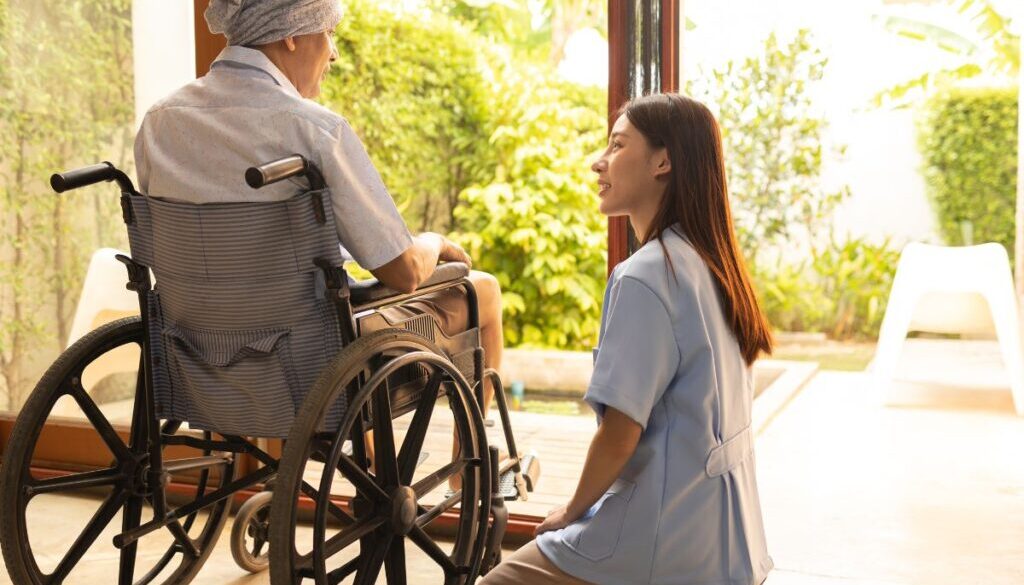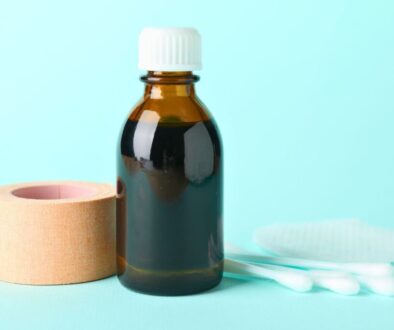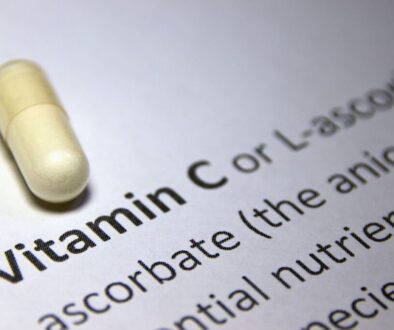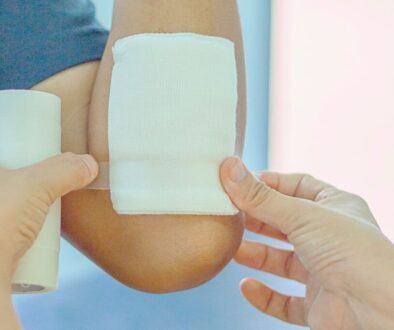How To Properly Dress Pressure Ulcers And Bedsores
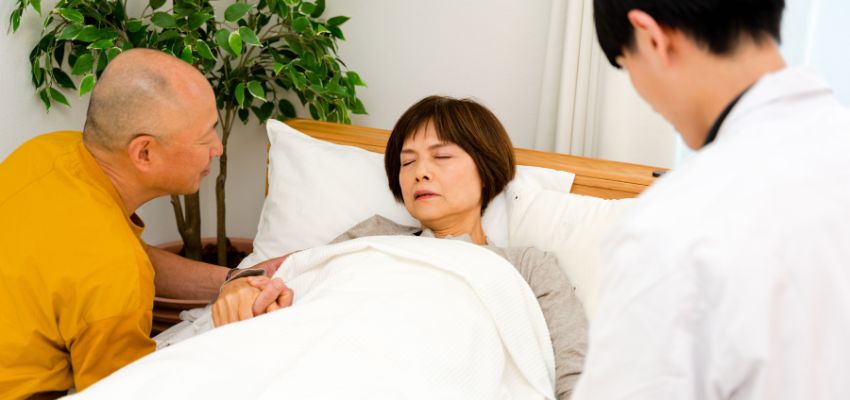
Symptoms Of Bed Sores
Pressure sores are classified into stages based on their severity:
- Stage I. The initial stage is marked by a persistent red area on the skin that does not blanch when pressed. This area may feel warm or cold and can be either firm or soft to the touch.
- Stage II. The skin breaks open at this stage, forming a blister or shallow sore. The surrounding skin may appear red and irritated.
- Stage III. A deeper wound develops, resembling a crater, with damage extending through the skin to the underlying tissue. Body fat may become visible. A bed sore patch may be useful for protection.
- Stage IV. This is the most severe stage, where the sore penetrates the muscle and bone, potentially affecting tendons and joints.
It’s important to note that some sores may not fit into these categories. For example, unstageable sores are covered by dead tissue, making it challenging to assess their depth. Deep tissue injuries show damage beneath the skin. They often have a dark purple or maroon appearance. These can quickly progress to a Stage III or IV sore.

Caring For Pressure Sores
Effective care is crucial for healing pressure sores and helping prevent further deterioration. Reducing pressure on the affected areas is crucial for Stage I and II sores.
Pressure Relief
- Utilize supportive materials such as foam cushions, booties, or specialized mattress pads to distribute weight evenly. Some pads are filled with air or water to provide optimal support and cushioning.
- Regular positioning is vital. Change positions frequently—every 15 minutes for those in wheelchairs and every two hours for bedridden individuals.
Wound Care
- Clean and dress the sores, ideally with each dressing change. Keeping the wound environment moist and clean is crucial to recovery when using wound dressings for pressure ulcers.
- Mild soap and water can be used for Stage I sores. If necessary, a moisture barrier to safeguard the area from bodily fluids can be applied. Consult a healthcare provider for the appropriate type of barrier.
- Clean the area with a saline rinse for Stage II sores to remove loose, dead tissue and debris, which can hinder healing.
- Avoid hydrogen peroxide or iodine cleansers unless your healthcare provider directs you to use them. These substances can damage the skin and delay healing due to irritation.
- Cover the sore with a dressing that protects against infection and maintains moisture to promote healing. Depending on the sore’s size and stage, you can choose from various wound dressings for pressure ulcers, including film, gauze, foam, gel, or others. Another option ideal as dressings for pressure sores on buttocks or other parts are amniotic allografts.
Injury And Friction Prevention
- Healthy skin must be kept clean and moist to prevent friction and breakdown. Regularly using mild soap and moisture-rich lotions can help maintain skin integrity.
- Lightly dust sheets with powder to reduce friction between the skin and bed, minimizing the risk of skin irritation.
- Avoid slipping or sliding when changing positions, and steer clear of positions that place pressure on the sore.
- Inspect the skin daily for new sores, and ask someone to check areas that are difficult to see.
- Report any changes in existing sores or the appearance of new ones to a healthcare provider right away. Prompt intervention can help prevent further complications.
Other Important Considerations
- Include nutritious foods to promote proper healing. A protein-rich diet and vitamins and minerals can enhance skin health and support recovery.
- Reduce excess weight. Maintaining a healthy weight is crucial. Carrying extra weight can stress vulnerable areas of the body, increasing the likelihood of skin breakdown and ulcers. Exercising regularly can help achieve a healthy weight.
- Ensure adequate sleep each night. Sleep is a critical element in overall health and healing.
- Refrain from massaging the skin near or on the ulcer, which can cause further damage.
- Avoid donut-shaped or ring-shaped cushions, as they can limit blood flow to the site and lead to additional sores. Instead, use cushions that evenly distribute weight and provide proper support.
By applying these care measures, individuals can improve healing outcomes and maintain skin integrity. This leads to better overall health and an improved quality of life.
When To Consult A Doctor
Seek prompt medical attention if blisters or open sores develop. If you notice any indications of infection, consult a healthcare provider immediately. Signs may include an unpleasant odor, pus, redness, warmth, swelling around the sore, or a fever.

Protecting Against The Hidden Dangers Of Pressure Sores
Pressure sores pose a significant health risk that necessitates proactive management. Identifying early signs and understanding risk factors is crucial. Effective care strategies, such as using proper dressings for pressure sores on buttocks, can help individuals and caregivers reduce the impact of these sores. Regular medical check-ups and strict adherence to care guidelines are essential for managing pressure sores. Take action today to protect yourself or your loved ones from pressure sores.
Heal Ulcers, Burns, & Surgery Wounds With Break-Through Amniotic Allograft Treatments
Experience the future of wound care with our advanced amniotic allograft treatments. Say goodbye to slow healing. Our innovative solutions promote faster recovery from pressure wounds, ulcers, burns, and surgical wounds. Trust the power of science for your healing journey. Regain your comfort and health today! See if you are eligible for treatment here.

About The Author
Corinne Grace is a full-time writer living in the Philippines. She has a nursing degree from Riverside College. Her background in nursing informs her perspective, allowing her to weave in themes of health, empathy, and resilience into her work.
